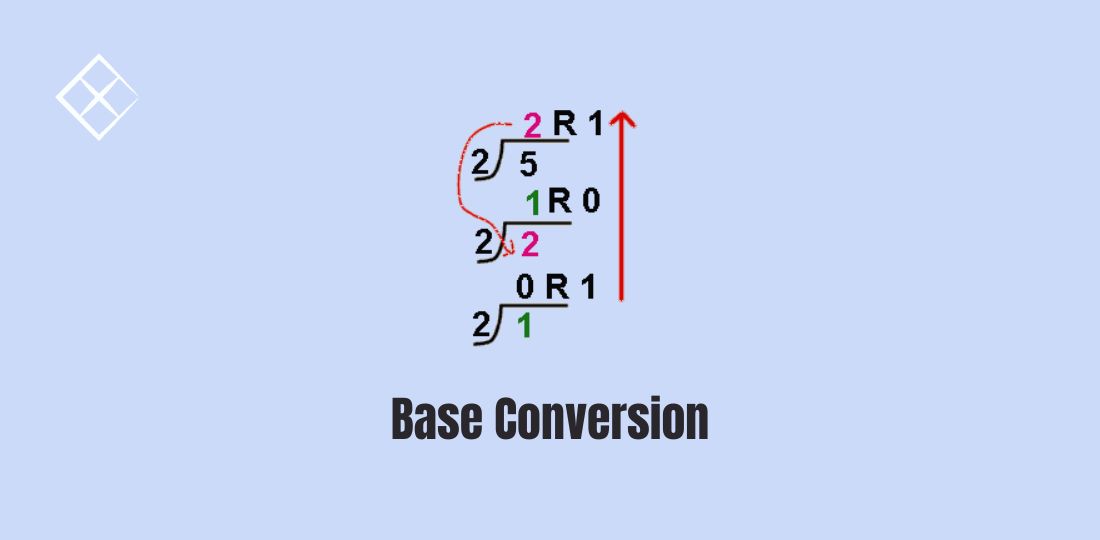Base Conversion
Problem
Given an integer num, return a string of its base 7 representation.
Example 1:
Input: num = 100
Output: "202"
Example 2:
Input: num = -7
Output: "-10"
Positive Case
Base conversion can be done through a succession of Euclidean Division. We repeatedly divide n by base and store the remainder. Finally we reverse the obtained string.
python def to_base_7_positive(num: int) -> str: “““assume num is positive””” result = [] while num: num, r = divmod(num, 7) result.append(str(r)) result.reverse() return “".join(result)
General Case
Of course, when n is 0, the output should also be 0. When n is negative, the result of the conversion should be the negation of the positive case:
python def convertToBase7(num: int) -> str: if num == 0: return “0” if num > 0: return to_base_7_positive(num) else: return “-” + to_base_7_positive(-num)
Another Example
Given an integer num, return a string representing its hexadecimal representation.
For negative integers, two’s complement method is used.
All the letters in the answer string should be lowercase characters, and there should not be any leading zeros in the answer except for the zero itself.
Example 1:
Input: num = 26
Output: "1a"
Example 2:
Input: num = -1
Output: "ffffffff"
Solution
python def to_hex(num: int) -> str: if num == 0: return “0” if num > 0: return to_hex_positive(num) else: return to_hex_positive(2 ** 32 + num)
def to_hex_positive(num): transform = ‘0123456789abcdef’ res = [] while num: num, r = divmod(num, 16) res.append(transform[r]) res.reverse() return “".join(res)
The Reverse
How can we do the reverse? Given a number and its base, how do we convert it to decimal?
Let’s do some examples. 1234 in base 5 equals 1*5^3+2*5^2+3*5+4=194 in base 10. 6a9 in hex equals 6*16^2+10*16+9=1705 in decimal.
Excel Sheet Column Number
Given a string columnTitle that represents the column title as appear in an Excel sheet, return its corresponding column number.
For example:
A -> 1
B -> 2
C -> 3
...
Z -> 26
AA -> 27
AB -> 28
...
Example 1:
Input: columnTitle = "A"
Output: 1
Example 2:
Input: columnTitle = "AB"
Output: 28
Example 3:
Input: columnTitle = "ZY"
Output: 701
Solution
python def titleToNumber(s: str) -> int: return sum( (ord(char) - ord(‘A’) + 1) * 26 ** i for i, char in enumerate(reversed(s)) )
Exercises
- Sum of Digits in Base K
- Check if Number is a Sum of Powers of Three
- Excel Sheet Column Title
- Convert to Base -2
- Remove 9
